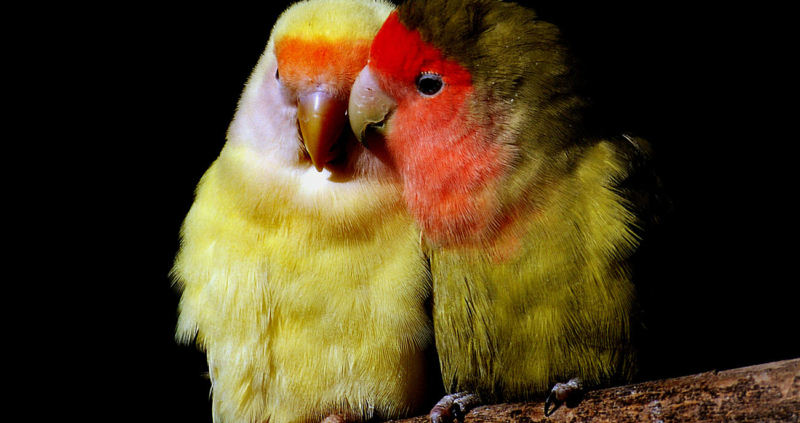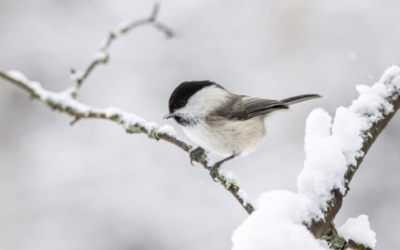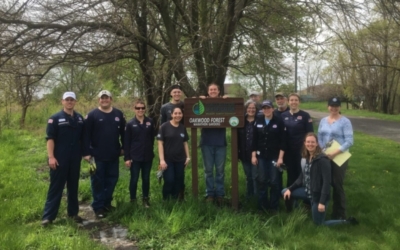Animal Magnetism: Do Animals Fall in Love?
With Valentine’s Day approaching, love is in the air and on many people’s minds. The feeling of new love can be exhilarating, a long-lasting love can be a comfort and the love between friends can be rewarding. But as humans, are we alone in this experience, or do our counterparts in the animal kingdom also experience the same thrill of falling in love?
What is love?
Whether animals experience love largely depends on the definition of “love.” Is love a deep emotional connection? If so, animals demonstrate these kinds of bonds with each other — either within their species or with animals outside their own kind. For example, elephants will mourn and even have elaborate grieving rituals, demonstrating that they had a bond with the deceased. Even household pets or animals in captivity will develop emotional connections with the humans taking care of them.
Science has also indicated that physiologically, animals are certainly capable of experiencing emotions like love in a similar way to humans. Humans and animals share many similar brain systems and chemicals, such as dopamine and oxytocin, that accompany feelings of love. Neuroscientific research indicates that romantic love may have even evolved in avian and mammalian species to facilitate reproduction.
Getting a date, finding a mate
Assuming that animals do experience love, how do they go on to attract that special someone? In this situation, the tactics of the animal kingdom are not too dissimilar from those of humans. They often need to get their potential mate’s attention by standing out from the crowd, and appearances help with this. In birds, for example, brightly colored plumage helps males capture the attention of females. The peacock is famous for its beautifully adorned feathers, but other birds like the ribbon-tailed astrapia or Wilson’s bird of paradise also exhibit long tails and eye-catching colors.
Animals will also show off to get the attention of someone they’re interested in, often through performing elaborate dances. Many birds are known for this, and the great crested grebe puts on an impressive show, even incorporating props in the form of reeds. What’s interesting about the grebes’ courtship dance is that females take an active role as well as males.
By building a home or nest, males of many species are demonstrating how they’ll provide for a future mate. For example, the southern masked-weaver constructs a spherical nest from grass, leaves or reeds. Research has shown that male birds even practice and improve on their nest-making skills in order to find the most suitable mate.
Just like humans may paint a portrait or write a poem for the one they love, some animals are adept at creating something beautiful to attract a mate. The male pufferfish, for example, draws symmetrical designs in the sand to impress the female, and if it’s effective, she will then lay her eggs in the middle of the design. Male bowerbirds take nest-building to the extreme and decorate their abode with colored objects they find — from plastic spoons to feathers of other birds.
Finding “the one”
In some animal species, once the elaborate ritual has caught the eye of a mate, those two animals will remain paired for life. There are many benefits of mating for life. For primates, monogamy helps ensure more offspring, as it allows males to remain close to their young and protect them from potential danger. In non-primate species, male monogamy often stems from females being spread out over a large area, with males choosing to remain with their mate so as not to risk a rival swooping in.
Co-parenting is also a factor for species that mate for life. Some young, like baby birds, need an intense amount of care, so two parents are required. While seasonal monogamy is more common in avian species than a lifelong partnership, there are a number of birds, like the bald eagle, that mate for life and share parenting responsibilities.
These evolutionary measures might not necessarily be humans’ idea of romance, but there may also be scientific evidence that animals that mate for life have feelings for each other. Prairie voles are more receptive to dopamine — the “desire hormone” — after mating. The release of this chemical is what compels them to remain together for life, not even choosing a new mate if one of them dies.
While we may never know with certainty whether animals fall in love, it seems unlikely that humans are the only animals that experience complex emotions. Regardless, the courtship and partnership of various animal species illustrate the similarities we all share when finding someone to spend our lives with.



